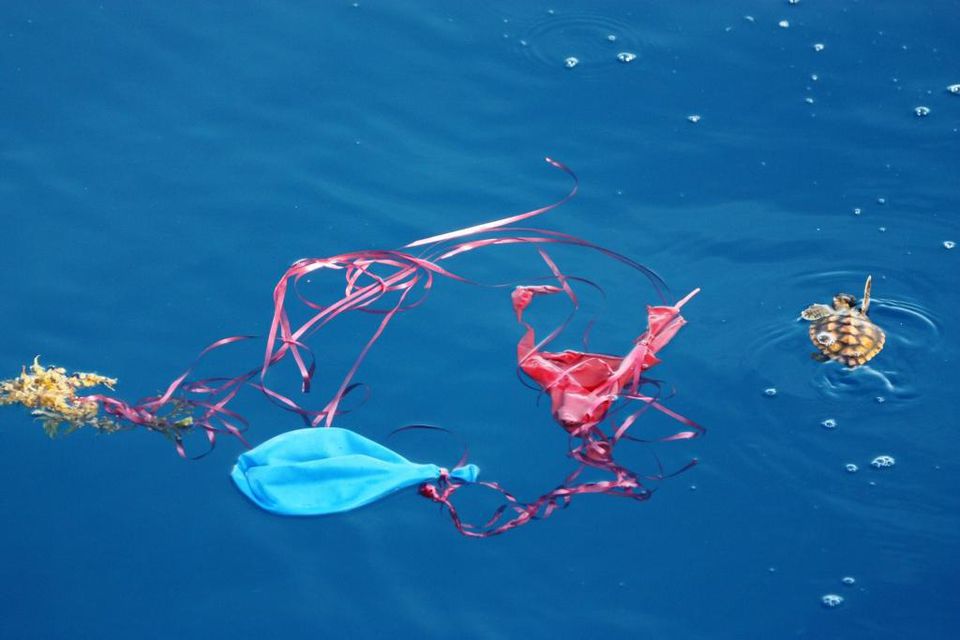TW: Graphic images ahead
Helium balloons (the “floating” ones) have made its way into every birthday party and celebration as the quintessential decoration. You may have seen them tied to a chair, a table, or even in the hand of a small child — they were simply the best way to show happiness and joy.

But have you ever wondered what happens to these brightly colored orbs once we release them into the sky?
They don’t go to heaven or space, that’s for sure.

Instead, they almost always get caught on something. Tree branches and electrical wires are the common culprits; most of the time, balloons end up in the ocean or washed up on seashores where animals can mistake them for food.
As with regular plastic waste, deflated balloons can become a huge problem for wildlife. Once ingested, balloons can cause loss of nutrition, internal injury, starvation, and ultimately, death in animals.

In fact, studies show that soft plastics like balloons are even more hazardous than solid plastic waste. Soft plastics are more likely to cause death because they can become compacted in an animal’s stomach, causing fatal obstructions.
Balloons and balloon fragments especially, are the plastic debris most likely to cause mortality. One in five seabirds that have ingested balloon debris ended up dead.

You may think that is only the fate of some balloons. In reality, all loose balloons end up like this. When you release balloons into the sky, they only ever climb up to around five miles before atmospheric pressure causes them to pop and tumble back down into the world below.
While these risks seem pretty obvious, people still can’t seem to grasp the seriousness of the situation. In 2019, the Indianapolis Motor Speedway still went on with its tradition of releasing thousands of balloons into the sky for the Indy 500 race, despite clamor for the organization to scrap the practice.

Photo from NOAA
They weren’t able to do so in 2020 or in 2021, but only due to setbacks caused by COVID-19 and not environmental concerns.
This event, along with the practice of releasing balloons for other celebrations, is a direct cause of pollution and wildlife death.
The message is clear: what goes up must come down. Balloons aren’t magical things that disappear into the sky. They eventually end up somewhere, severely affecting the environment and its inhabitants. And unfortunately, the ones who suffer from our “celebrations” are also the ones who don’t have a voice.
So do your favorite seabirds, fish, and sea turtles a favor and skip out on the balloons this year. You really don’t need them.





















